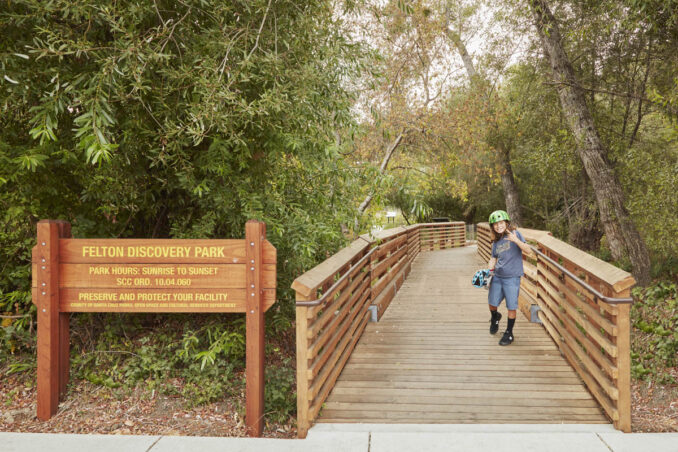
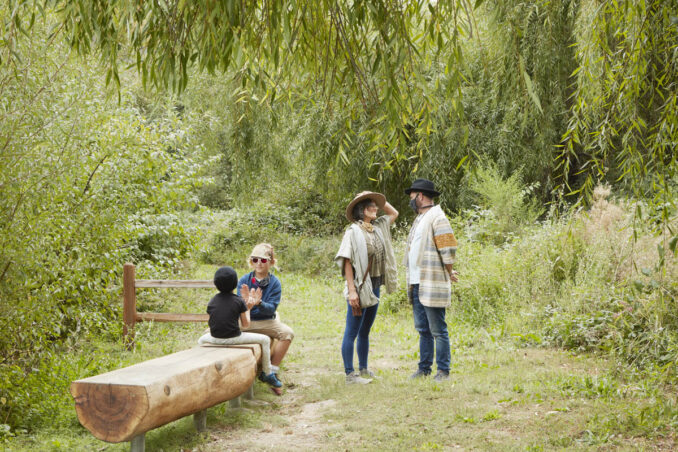
In a world increasingly experienced from behind the comfort of a device screen, libraries play an invaluable role in the building of a healthy, connected community. They give visitors an opportunity to explore research, experience new ideas, get lost in stories. They can provide a sense of wonder and curiosity; opportunities for both solitude and gathering. In 2016, local leaders of Felton, California, USA came together to cultivate these same qualities in an innovative outdoor space, one that would complement a new library building and creek-side location. It was in these threads that the idea for the Felton Library Discovery Park was born.
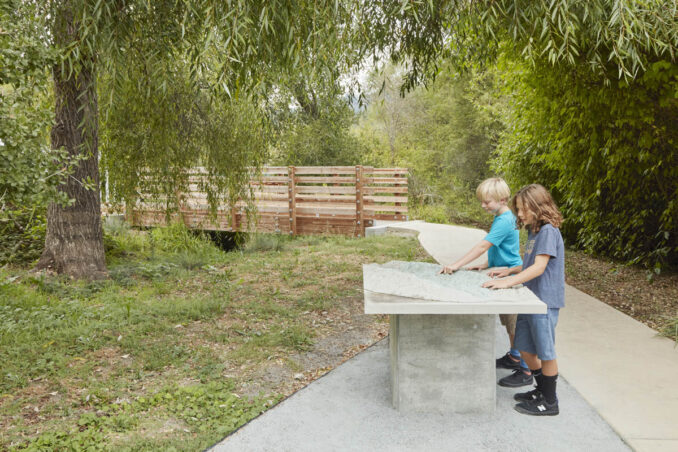
The new library would be located on an environmentally significant site. The property contains a stretch of Bull Creek, a tributary of the San Lorenzo River watershed in the old-growth redwood coasts of Santa Cruz County. The proximity of the creek provided a unique opportunity to not only restore its health, but also weave future environmental literacy and stewardship programs into the library.
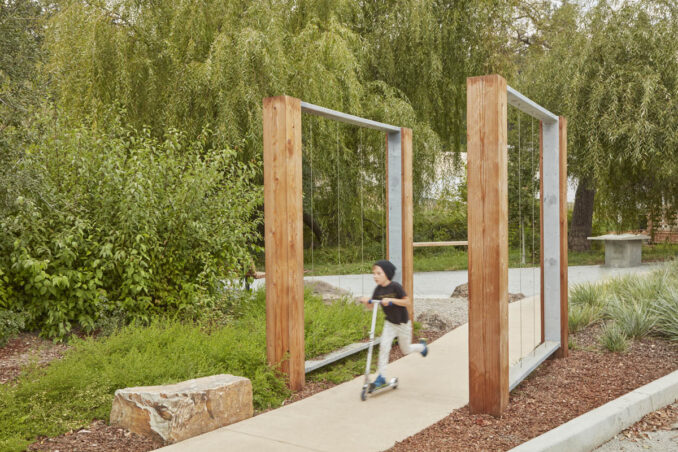
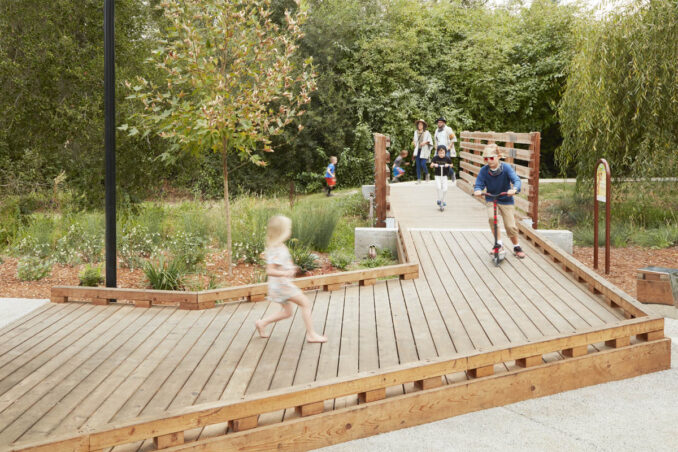
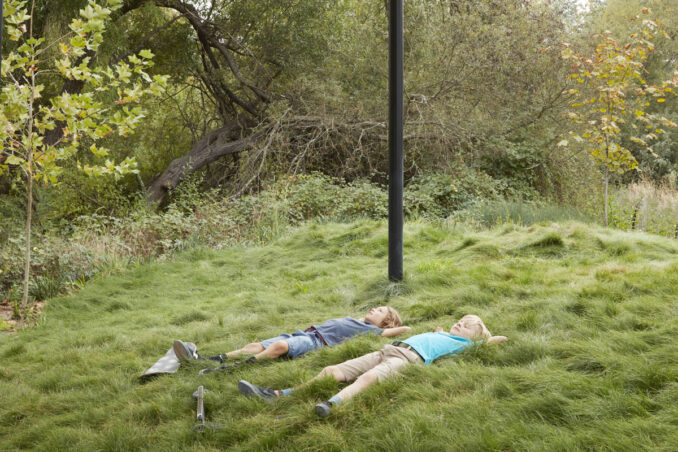
Planning efforts began by engaging stakeholders and residents in a three-part series of design workshops and conversation. From this process, three major themes of importance emerged, evolving into the driving goals of design:
- Create an outdoor extension of the new library building, one that continues its aesthetic and spirit of discovery. Provide opportunities for kids to engage with the local watershed, wildlife habitats, and larger environment in which they live.
- Create pollinator habitat. Provide year-round sources of food and a healthy sanctuary for the struggling bee and pollinator populations within city space.
- Improve the health of the existing creek embankment and floodplain, which was being channeled through a culvert and inundated with a growing monoculture of invasive species.
Construction began in 2019, with special efforts to minimize environmental impacts to the existing creek and floodplain. Prior to construction, permits were obtained from the California Department of Fish & Wildlife and the Central Coast Regional Water Quality Control Board. A combination of AmeriCorps staff and volunteers removed over 10,000 square feet of invasive vegetation, replacing them with native riparian plants. Biologists were engaged to relocate native wood rats and their nests to outside of the work boundaries. To address hydrological issues, an existing culvert was replaced with a pedestrian footbridge, and permeable surfaces were used to minimize increases in stormwater runoff.
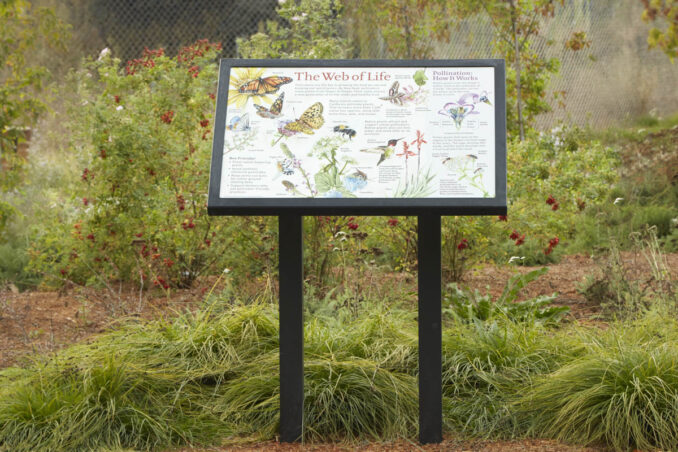
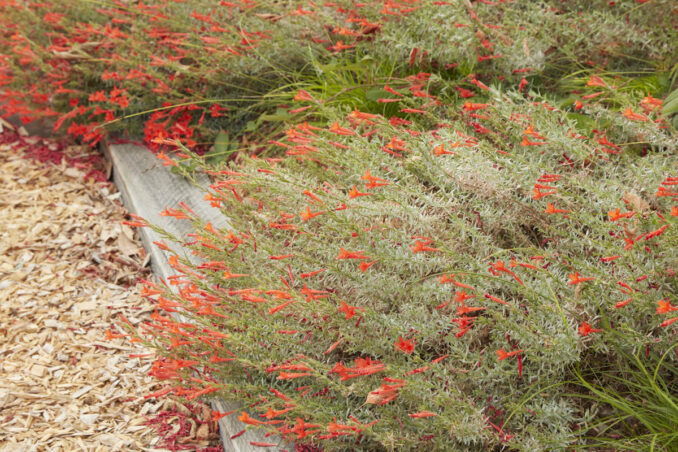
Opened for use in 2020, the final park design features a wide pedestrian walk that strolls visitors through native riparian and pollinator demonstration gardens. Interpretive signs on pollinators and riparian ecology serve to inspire and teach kids about the natural world around them. An open play area provides log scrambles and rope structures for climbing and exploration. A human-scale nest invites kids to climb, play, and weave new materials in as they might observe wildlife doing in this shared riparian-park habitat. The park also features interactive exhibits with musical instruments to play together, and a human sundial to ignite curiosity. A wooden stage with grassy knoll amphitheater and pollinator plaza with benches provide gathering areas for storytimes and environmental literacy programs.
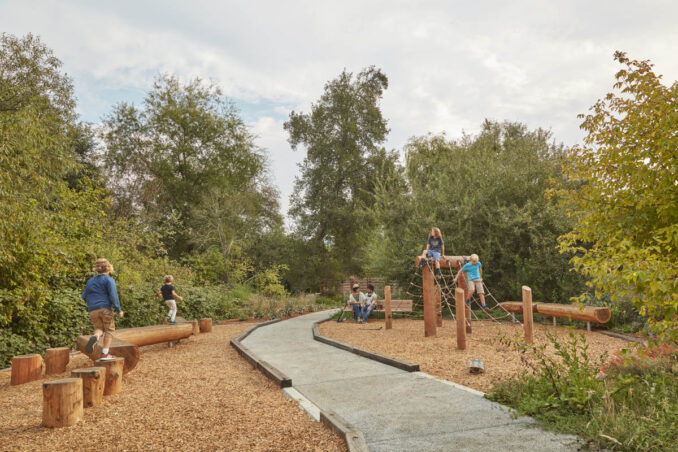
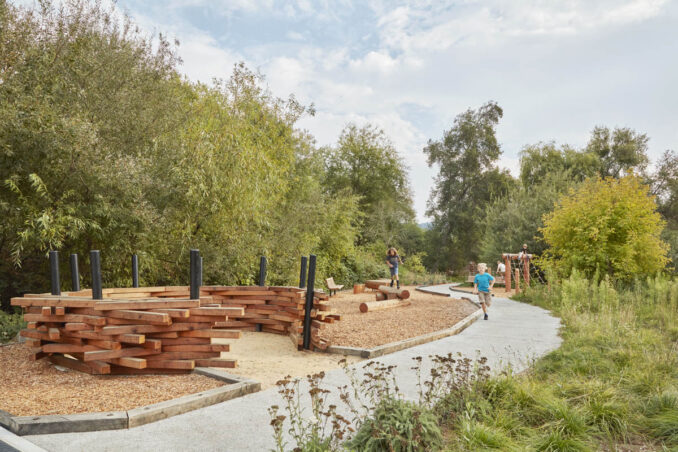
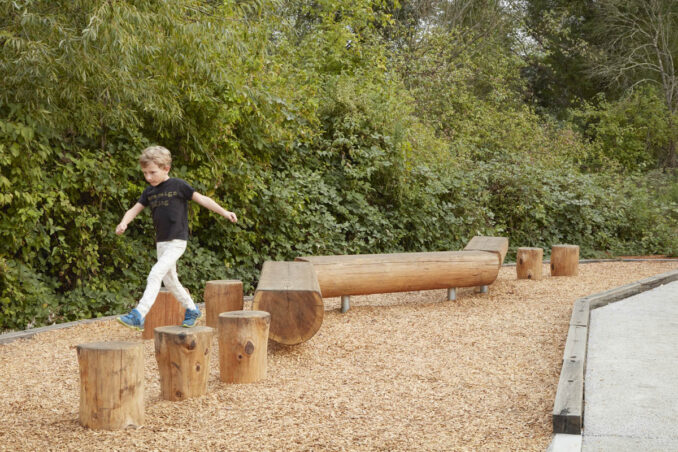
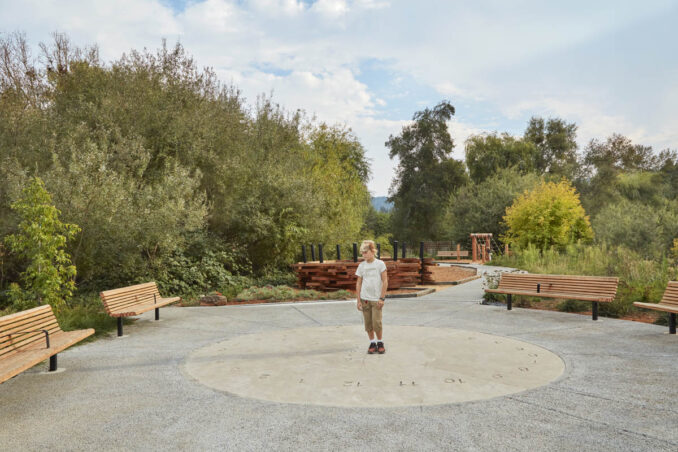
During this especially isolating time of the COVID pandemic, the park provides an invaluable resource to families looking for safe ways to engage their children outdoors. The park will serve as a model and teaching site for students, volunteers, and residents interested in learning about protecting and preserving the ecologies around them. By engaging families through teaching and play, the Felton Library Discovery Park lays the groundwork for healthy community building centered on a relationship with the natural world and a culture of care and environmental investment for generations to come.
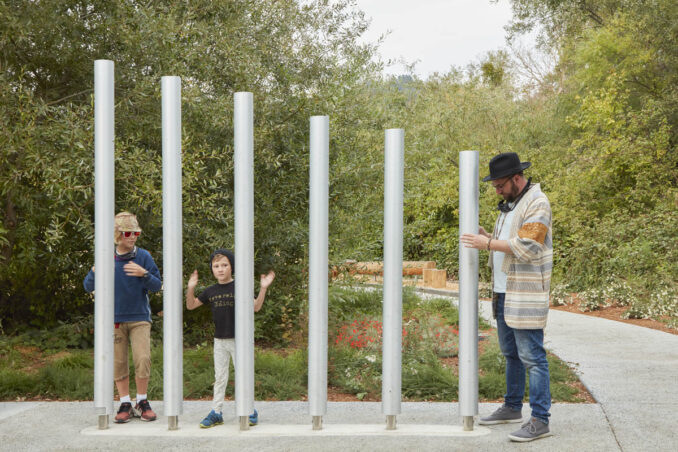
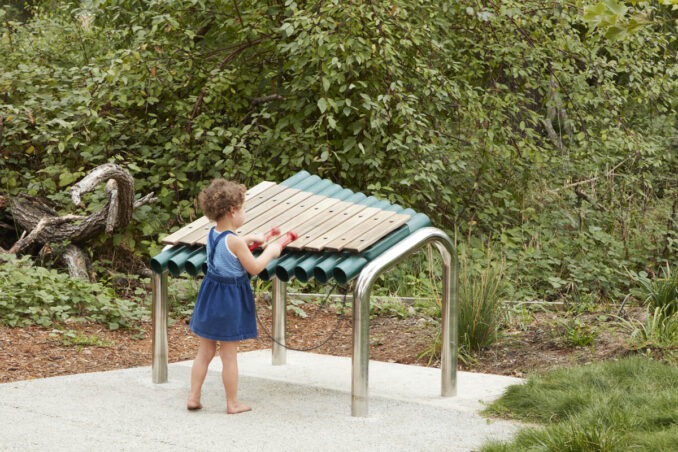
Project Specifications
Natural and permeable materials were prioritized throughout the park (making up 97% of the overall site area), to minimize impacts on the local watershed and adjacent creek. 94% of paving materials on site are permeable, including 5,124 sf permeable concrete, 527 sf gravel paving, 1,926 sf engineered wood mulch safety surfacing and 706 sf wood boardwalk, bridge, or stage. Impermeable surfaces include 144 sf stabilized decomposed granite and 366 sf of concrete including a maintenance driveway entrance and a precast concrete sundial feature. Eucalyptus wood curbs, sourced from a local recycling yard, were used instead of traditional concrete curbs along the main path.
Play structures and features are composed of natural materials. Climbing structures are composed of wood while a tot digging area utilizes crushed stone.
Riparian restoration along the creek was implemented by Americorps staff and volunteers, removing 10,000 sf of invasive vegetation and replacing them with native riparian plants.
Environmental education exhibits along an interpretive loop trail, including a 3D model of the local watershed and informational signage on the local natural environment, encourage environmental literacy and stewardship among visitors. A local artist was engaged to develop informational signage, which included:
- The Riparian Zone, A Vital Refuge
- The Web of Life, Pollination and How It Works
- Restoring Fires Natural Role
- What Makes a Healthy Creek
- Your Watershed, Your Water
Felton Library Discovery Park
Team Credits
Design Consultants:
BASE Landscape Architecture, Inc.
MME Civil + Structural Engineering
RMA Irrigation
Public Agency: County of Santa Cruz Parks, Open Space and Cultural Services Department
Prime Contractor: Thompson Builders Corp
3D Model: LGM3D
Interpretive Panels: Jane Bolling Design
Photography: Caitlin Atkinson
